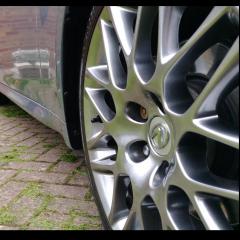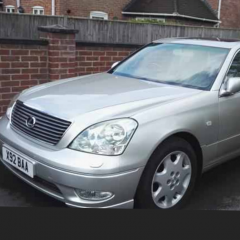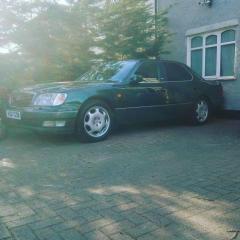Leaderboard
Popular Content
Showing content with the highest reputation on 07/13/2016 in all areas
-
2 points
-
I got the dreaded Check Hybrid, Check VSC and Check EBC warning lights. Fault code readings P0A80 Hybrid and P3017 (battery cell block number 7 fault). Having gotten a quote for around €6000 to fix it, I decided to do it myself. I ordered a battery cell on ebay for €45.00 delivered to Ireland. Tools needed: Socket set with 8mm, 10mm and 12mm. Flat head screwdriver, long nose pliers and a multi meter to read voltage. (You may also need a slow trickle 12v battery charger, I'll explain later). Time needed: about 4 hours, more if your connections a very dirty. 1: Remove ALL carpeted paneling from the boot (trunk if you're in the US). This is done by inserting the flathead screwdriver into the black plastic rivets and popping them out. Remove the boot flooring too, just leave the tool tray in place. You will need the 10mm socket to remove the rear boot floor luggage anchor points once you've popped open their plastic covers. The upper hanging points need to be squeezed to remove. Disconnect the power supply to the light on the right hand panel. 2: Remove the orange circuit breaker on the HV battery by sliding to the right and then pulling towards you. 3: Remove the black air duct on the bottom of the HV battery by popping the 2 black plastic rivets. 4: Unplug the power supply to the white cooling fan on the upper right of the HV battery and remove the 2 nuts holding on the fan. This should allow the 2 upper black ducting to move sufficiently to be able to remove them. 5: Open the panel covering the 2 Orange Cables (3 x 8mm nuts) and disconnect the 2 orange cables, (you can tape them up with electrical tape if you so wish). Pull back the rubber cover on the Black cable and unbolt that too. You should now look something like this: 6: Disconnect the cable running from the HV battery to the 12v lead battery. Continue to remove the 12v battery by disconnecting the +ive and -ive terminals and the white connector plugs attaching it the the HV battery. Also need to take off the temp sensor and the vent hose on the 12v battery. Remove the 12v battery support bracket and the battery tray itself. 7: Remove the last 2 bits of black ducting that was clamped by the 12v battery tray. 8: Remove the white tubing on the right of the HV battery. 9: Remove the 4 12mm nuts holding the base of the HV battery in place, 2 on each side. 10: You need to unbolt the nuts hidden behind the back seat headrests. 11: Pull the rear seats forward enough to remove the large plastic panel in the center between the rear seats and the boot wall, its hidden behind the fireproofing fabric. Use this panel cover to hold the seats away from the boot wall by wedging it between seats and wall. 12: Pull back the fireproofing to reveal 2 smaller access panels covered by a black sticky rubber square. Now remove the 3 12mm nuts holding the HV battery to the boot wall. 13: Now the tricky bit, lift the HV battery over the bolts in the boot and slide it out. (I recommend putting cardboard on the tool tray to avoid scratching when sliding the HV battery). If you are strong enough you can lift the HV battery out on your own, if not get help, it weighs about 50 kilos. Your boot should now look like this with the access panels behind the seats visible: You should also have this, I placed mine on some cardboard on my kitchen table: 14: Take off the HV battery cover by opening all the 10mm nuts, and a few 8mm. unclip the black cable while taking off the three cover panels. 15: Unclip the black plastic covering on both sides of the HV battery to reveal the 8mm connector nuts in the orange casing. 16: Number the cells 1 to 40 using a permanent marker. Use your multi meter to get a reading across each of the 40 individual cells, i.e. one lead on the +ive terminal of the cell and the other on the -ive, and record your findings, as you can see cell 28 was low for me: 17: Pull back the rubber vent tubing running along the top of the HV battery until to get beyond your bad cell/cells. 18: Remove the white end panel holding the cells in place: 19: Remove the 80 x 8mm nuts in the orange casing and clean if necessary. I used bleach and some sand paper to clean all nuts a copper plates, if you're gonna do it - do it right). 20: Remove the 8mm nuts holding each cell in place underneath until you reach your bad cell (this will probably involve removing the support leg and the converter assembly unit below the HV battery: 21: Good cells look like this Bad ones like this: 22: Start replacing your cells back into the HV battery, it doesn't matter what order and you can't mess up polarity as it only screws in on one side. I put my new cell in last in case it was a dud. (If your new cell is of a lower or higher voltage use a slow trickle 12v battery charger to get it to the same voltage as the other cells. 23: WATCH THE TEMP SENSORS UNDER THE BATTERY CELLS (3 of them), MAKE SURE YOU CLIP THEM ON AS YOU GO. See the black plastic clip peeping out here: 24: That's it you're done, just reverse everything to put in back in. Mind your back and don't bother touching cell 1 and 40 at the same time if you have the orange connector put back on. Good Luck!1 point
-
1 point
-
Don't forget the active sound can be turned up/down/off by the scroll wheel near your left knee (apologies if you know this already).1 point
-
I changed the diff oil on my mk4 after it had done 100k miles or so. It's stinky stuff! Also, the hex nuts can be very tight, so make sure the Allen key is a really good fit before you start wrenching on it; you don't want to 'round' the nut. Always top one first. Make sure the car is completely level when you do it or you could under fill it. Use the right grade of oil. It comes in squeezy bottles which have a long plastic tube for the filler hole.1 point
-
I think the post Malc mentioned yesterday was by Tim Hunter ( who used to own my silver LS400 ... ) and was in respect of replacing the front struts, but the position may be the same for the rear struts.1 point
-
Everything In the second photo is internal, what you see is the actual trans cooler which is aluminium and in perfect condition which I took out, there's nothing else that can really fail and because the transmission fluid is pumped it sucks coolant in when the o rings fail due to rust.1 point
-
...and if anyone would like a laugh - then I'd also completely forgotten that my car has a dashcam fitted. I've now reviewed the journey that my wife took on Sunday afternoon... She was in a hurry... Sets off from home, and within 50 yards passes over a speed-table at normal speed, without any braking or consideration for it at all. 50 yards later there's a slightly raised mini roundabout - and she also goes directly over the top of it (you can hear the suspension "thunks" as she takes it). Almost simultaneously with taking the mini roundabout at speed you can hear the "ping ping" noise, that the dash makes when it displays a warning message. She doesn't seem to notice this, or just ignores it. Around 20s later the dash again pings twice, and obviously continues to flash up messages. At this point she is heard to mutter "What's going on here?" and stops the car for about 10s - only to then just continue driving. At this point she's less than 300 yards from home. A short while later, when around a mile away from home she calls me for a "Is your car OK to drive with these messages popping up?" conversation. We've now had a discussion about the true course of events and the subject of "mechanical sympathy" where road surfaces are concerned.1 point
-
Not sure if I've read you right but I can tell you that this latest update (VD12103A) was issued in May this year. The install instructions you have looked at were provided for previous updates too. You will find that the instruction will almost certainly be the same for use with future updates. Apologies if I have misunderstood what you were saying. (I am a wrinkley!)1 point
-
1 point
-
1 point
-
I'll soon be doing a gearbox flush and filter (oil strainer) change, the fluid is reddish brown and after 196,000 miles it deserves it. I cannot understand why anyone would not change the fluid and filter after a lot of miles, no filter was built to last 19 odd years, gearboxes wear and the filter does what it says on the box, namely filter! I owned a Toyota Soarer with the same engine and gearbox a good few moons ago and that certainly benefitted from a filter and fluid change. If you're doing it yourself I just think you need to be meticulously clean as those boxes don't like any any little extra bits in them! Oh and from what I've gleaned over the years use the right sealant on the pan which is Loctite 5699 Premium Silicone Grey Gasket Maker/Sealant.1 point
-
1 point
-
No way. I saw that . Well over priced. Says he's not a dealer but didn't he have a poor specced silver one the other day too.1 point
-
I don't hold with the latest 'lifetime fill' concept on modern cars. Manufacturers want to replace your gearbox when it fails. The sooner the better as far as they are concerned, preferably, just as the warranty runs out. It's a big con. No ATF can be that efficient that it never needs replacing or replenishing at some point. My neighbour never changed the ATF on her Beemer X5 and guess what? Yep, catastrophic gearbox failure. Cost her a fortune.1 point
-
Your not thinking about buying baz one are you? Apparently he sold a 51 reg ls430 recently for a white ls430, but if you look on gumtree, he's just advertised another gold ish coloured ls430 as he's still looking for a white one. Overpriced as usual, high mileage, with rust spots in the usual places. I don't understand him sometimes1 point
-
You may well be correct - I changed the pads last time (and it was almost certainly the first change). As the front faces of the discs looked to be in pretty good nick I probably didn't check the inner faces as carefully as I should have. But it still begs the question - what is the mechanism for clean front faces but corroded back faces?1 point
-
John - I have just changed the oil in mine today - only had the time to do the oil and the filter before the wife was calling me in for tea so a good time to stop. Will finish the other service areas tomorrow - didn't manage to find whether the diff box drain and fill plugs incorporated a washer so may just take a flier and do this on spec - have a good range of washer sizes if required but think the sizes may reflect the same as the oil drain plug - anyway - while I was under the car undoing the oil filter cap I noticed what looks like a drain point for the radiator - The one I have found is under the cover for the oil filter cap (remove the cover - 3 screws) and it will be noticeable looking through the hole towards the front of the car - a few pictures below - one of the "tap" through the cover and one through a hole in the plastic shield (before removing the oil cap shielding cover) Hope this helps1 point
-
1 point















